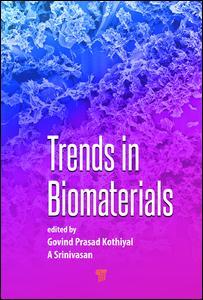Trends in Biomaterials
Coordonnateurs : Kothiyal G. P., Srinivasan A.

Biomaterials research requires the union of materials scientists, engineers, biologists, biomedical doctors, and surgeons. Societal implications have invoked tremendous interest in this area of research in recent years. What started as a search for strong and durable implant materials has now led to path-breaking developments in tissue engineering, targeted drug delivery, and tissue scaffolds. Viable applications of mesoporous structures, polymer biocomposites, and fibers (synthetic and natural) in the areas of clinical orthopedics, controlled drug delivery, tissue engineering, orthodontics, etc., have emerged as relatively recent concepts.
This book presents recent results related to both materials aspects and implant issues. The focus is on structural, magnetic, antibacterial, bioactivity/compatibility, mechanical, and other related properties and the implication of these results on biomedical applications. The book discusses technical problems faced by the surgeon during implant fixation in total hip replacement and the selection of materials based on the patient?s requirement. It also addresses recent advances in implant materials, including the reinforcement and biocompatibility issues.
Bioactive glass and glass-ceramics containing iron oxide: preparation and properties. Self-assembly approach for biomaterials development. New trends in bioactive glasses: the importance of mesostructure. Natural and synthetic polymer fiber based biomaterials. Biomaterials in total hip joint replacements: the evolution of basic concepts, trends and current limitations—a review.
G. P. Kothiyal, superannuated as outstanding scientist and head, Glass and Advanced Ceramics Division, Bhabha Atomic Research Centre, Mumbai, India, has major areas of specialization in glasses, glass-ceramics, thin crystalline film (by MBE) and bulk single crystal growth. He has published more than 155 research papers in peer-reviewed journals and edited several conference proceedings. Prof. Kothiyal is a recipient of several awards, including the 2009 and 2011 DAE Group Achievement Award, 2009 INS Science Communication Award, and 2002 MRSI Medal lecture Award.
A. Srinivasan, professor in the Department of Physics, Indian Institute of Technology Guwahati, India, is an experimental physicist with research interests in magnetic materials, glasses and glass-ceramics, and thin films. He has authored more than 100 peer-reviewed journal papers. Prof. Srinivasan’s research interests focus on the development of glass and glass-ceramics for electronic, biomedical, and optical applications; development of advanced materials (spintronic materials, ferromagnetic shape memory alloys, soft magnetic alloys, and nanostructured materials); and instrumentation.
Date de parution : 03-2016
17.4x24.6 cm
Disponible chez l'éditeur (délai d'approvisionnement : 15 jours).
Prix indicatif 135,96 €
Ajouter au panierThèmes de Trends in Biomaterials :
Mots-clés :
Glass Ceramics Samples; bioactive; Bioactive Glass; glass; SBF Solution; simulated; 45S5 Bioglass; body; SANS Spectrum; fluid; Sol Gel Bioactive Glass; indian; Sol Gel Glasses; institute; Bone Tissue Engineering; technology; Dodecyl Phosphate; guwahati; Bioactive Glass Composite; tissue; Wet Spinning; Tissue Engineering; Self-assembled Structures; Hip Resurfacing; EPR Parameter; Bioactive Glass Scaffolds; Drug Delivery Applications; Silica Rich Layer; Non-bridging Oxygen Atoms; Acetabular Cup; Melt Spinning; EPR Spectrum; Local Atomic Structure; Wear Debris; Aseptic Loosening



